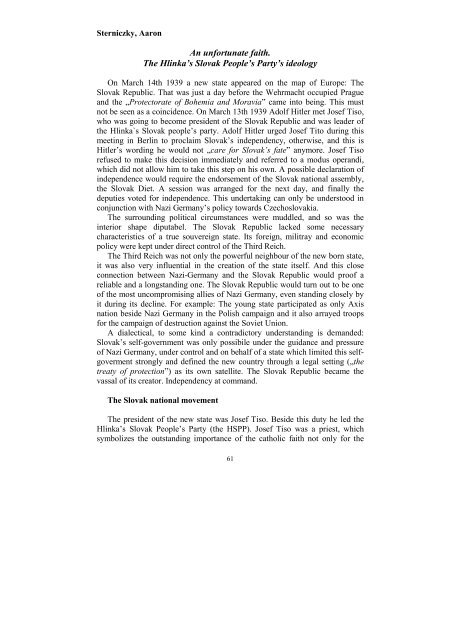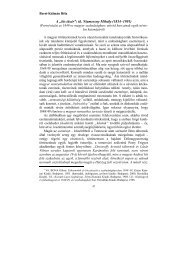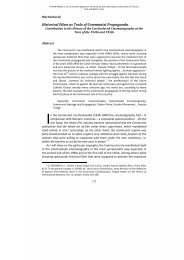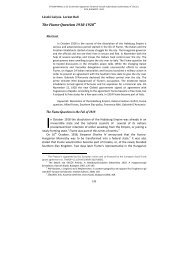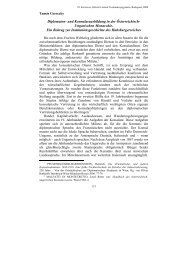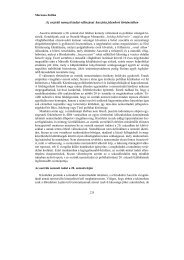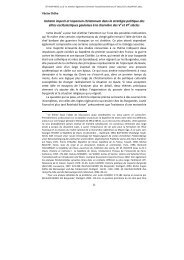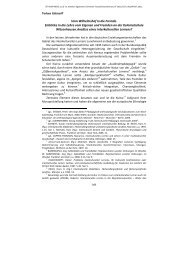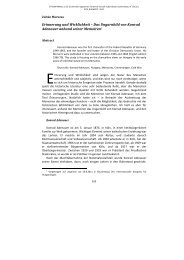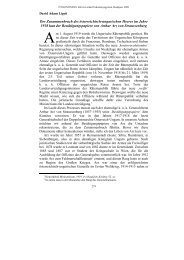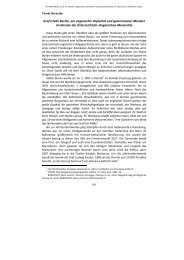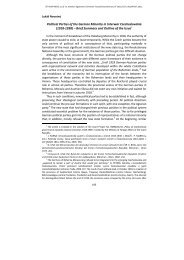The Molotov-Ribbentrop Pact - ELTE BTK Történelem Szakos Portál
The Molotov-Ribbentrop Pact - ELTE BTK Történelem Szakos Portál
The Molotov-Ribbentrop Pact - ELTE BTK Történelem Szakos Portál
Create successful ePaper yourself
Turn your PDF publications into a flip-book with our unique Google optimized e-Paper software.
Sterniczky, Aaron<br />
An unfortunate faith.<br />
<strong>The</strong> Hlinka’s Slovak People’s Party’s ideology<br />
On March 14th 1939 a new state appeared on the map of Europe: <strong>The</strong><br />
Slovak Republic. That was just a day before the Wehrmacht occupied Prague<br />
and the „Protectorate of Bohemia and Moravia” came into being. This must<br />
not be seen as a coincidence. On March 13th 1939 Adolf Hitler met Josef Tiso,<br />
who was going to become president of the Slovak Republic and was leader of<br />
the Hlinka`s Slovak people’s party. Adolf Hitler urged Josef Tito during this<br />
meeting in Berlin to proclaim Slovak’s independency, otherwise, and this is<br />
Hitler’s wording he would not „care for Slovak’s fate” anymore. Josef Tiso<br />
refused to make this decision immediately and referred to a modus operandi,<br />
which did not allow him to take this step on his own. A possible declaration of<br />
independence would require the endorsement of the Slovak national assembly,<br />
the Slovak Diet. A session was arranged for the next day, and finally the<br />
deputies voted for independence. This undertaking can only be understood in<br />
conjunction with Nazi Germany’s policy towards Czechoslovakia.<br />
<strong>The</strong> surrounding political circumstances were muddled, and so was the<br />
interior shape diputabel. <strong>The</strong> Slovak Republic lacked some necessary<br />
characteristics of a true souvereign state. Its foreign, militray and economic<br />
policy were kept under direct control of the Third Reich.<br />
<strong>The</strong> Third Reich was not only the powerful neighbour of the new born state,<br />
it was also very influential in the creation of the state itself. And this close<br />
connection between Nazi-Germany and the Slovak Republic would proof a<br />
reliable and a longstanding one. <strong>The</strong> Slovak Republic would turn out to be one<br />
of the most uncompromising allies of Nazi Germany, even standing closely by<br />
it during its decline. For example: <strong>The</strong> young state participated as only Axis<br />
nation beside Nazi Germany in the Polish campaign and it also arrayed troops<br />
for the campaign of destruction against the Soviet Union.<br />
A dialectical, to some kind a contradictory understanding is demanded:<br />
Slovak’s self-government was only possibile under the guidance and pressure<br />
of Nazi Germany, under control and on behalf of a state which limited this selfgoverment<br />
strongly and defined the new country through a legal setting („the<br />
treaty of protection”) as its own satellite. <strong>The</strong> Slovak Republic became the<br />
vassal of its creator. Independency at command.<br />
<strong>The</strong> Slovak national movement<br />
<strong>The</strong> president of the new state was Josef Tiso. Beside this duty he led the<br />
Hlinka’s Slovak People’s Party (the HSPP). Josef Tiso was a priest, which<br />
symbolizes the outstanding importance of the catholic faith not only for the<br />
61


